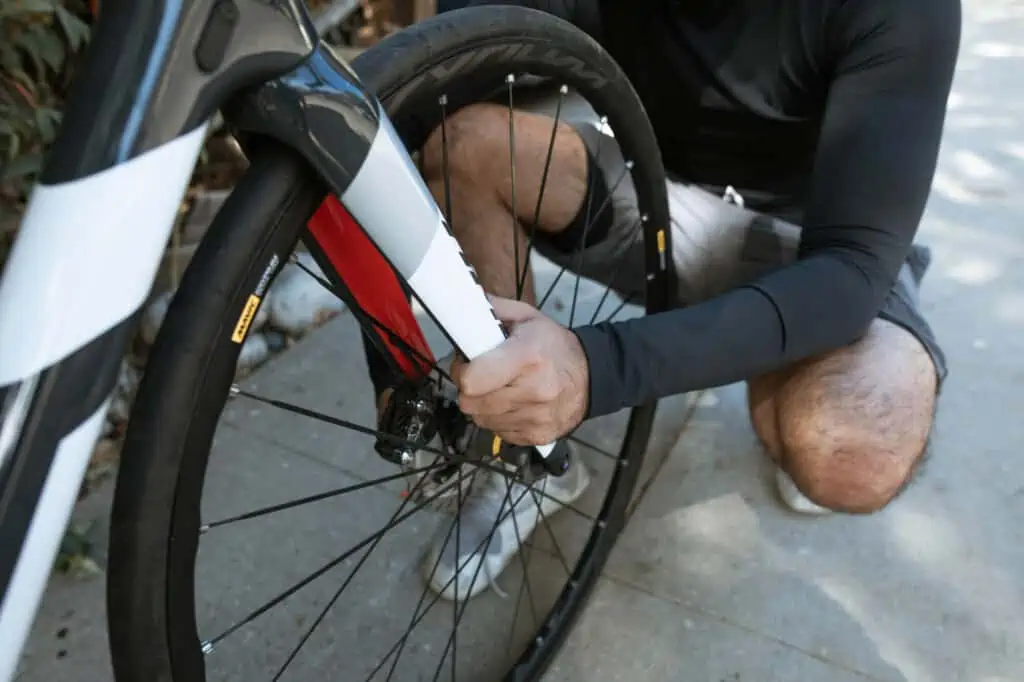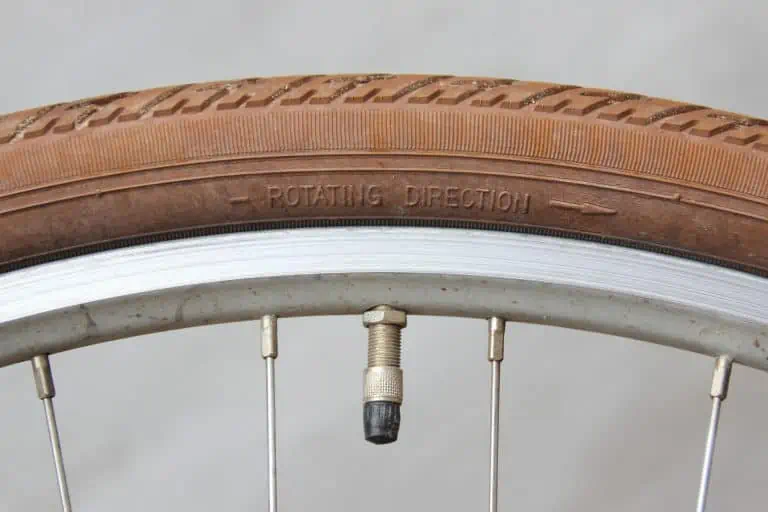What To Do if You Get a Flat Tire on a Bike During Your Cycling Trip?
Have you ever got a flat tire when cycling a long way from home (or civilization for that matter?). I happened to me couple of times, and now, for each longer route, I take a spare inner tube, patches and a pump with me in my backpack.
Always!
Replacing the inner tube or patching a hole in it during a forced stop in the forest or on a dirt road is not the greatest pleasure in life, but it allows you to continue the journey or simply come back home safely.
However, there are situations when we do not have such a set with us (e.g. a short trip), and we need to move on, even to reach the nearest shelter and wait for transport. Or go to a bike shop and put on a new tube.
Sh…t happens, as they say.
I once perforated an inner tube twice in one day. As it turned out later, I had a torn tire right at the edge of the rim and I just didn’t notice it. By the way, I will also say that when installing a new tube at a later time, or after patching the old one, you need to check the tire from the inside to the outside – whether there is anything stuck in it.
Trust me on this one!
What to do if you get a flat tire on a bike and you don't have a spare inner tube or patch with you?
Tie a knot on the inner tube
One of the slightly crazy ideas, but they work very well, is to tie a knot on the inner tube, the most important thing in this method is that the puncture point of the inner tube must be above the knot. Put the tube prepared in this way on the rim and pump it – the air will tighten the knot and we can calmly go back home or go in search of a service station.
You’re probably wondering how you can ride a tube with a knot? If we do everything right, we won’t feel any bulging while driving and thanks to this method we will reach our destination calmly and comfortably.
Take out the inner tube and stuff the tire with a lot of grass
If the first method does not work, or, for example, we do not have a pump, we take out the inner tube and stuff the tire with a lot of grass, leaves or newspapers so that it fits tightly on the rim during assembly and does not have a tendency to slip.
Driving in one of these ways, you risk damaging the tire, so you should drive slowly and carefully – so as not to damage it additionally. Especially the second way may not work on thin, road tires. When we have thick tires with off-road tread – it will be much easier to return to civilization.
After returning home, it is also worth considering how to protect the inner tube against punctures. Otherwise, the problem may recur quickly.
How to protect yourself from a tire puncture so that you don't have to worry about emergency tire fixing on the fly?
Unfortunately, there is no method that would protect our tires in 100% against punctures, but we can minimize this risk.

Check tire pressure
Before spending money on new bicycle parts, which I will write about in a moment, it is worth checking if the tires are inflated to the correct pressure. They need to be checked regularly, I would recommend at least once a week, using a pressure gauge (the one in the pump is enough), and not by eye.
Checking the pressure on the principle – whether the tire is hard – can be very deceptive. Many tires have quite thick walls and seem well inflated, but they don’t have to be. Too low pressure can cause the tire to bend after hitting a curb, for example, and pinch the inner tube to the rim.
Check the tires
If you have suspiciously frequent punctures, and only in one wheel, check the tire (inside and outside) for a nail, a piece of glass or a spike.
Check the rims
The cause may also be a burr on the rim or a badly mounted spoke that will stick to the inner tube. A band should also be put on the rim, which will separate the inner side of the rim from the inner tube. If the wristband is missing or in poor condition, it can cause problems. The headband must be smooth and evenly arranged along its entire length, ideally it should cover the rim along its entire width.
Such an insert can be in the form of a tape that we put between the inner tube and the tire.
Anti-puncture inserts are a good protection but unfortunately such an addition will increase the weight of the bike, we can also buy reinforced tires that already contain an anti-puncture insert.
Consider tites with anti-puncture insert
If you ride a bike a lot, it is worth considering tires with an anti-puncture insert. Unfortunately, this is followed by a much higher weight, often also a higher price – but this type of tire will last much more than a regular tire. Physics is not so easily fooled and a good cover will be simply a thicker protective layer. Tires that are better protected against punctures than standard models are, for example, Schwalbe Marathon Plus, Continental Gator Hardshell, Michelin Protek Max.
Both easily available on Amazon. They should also be easy to find in your local bike store.
If you’re using your bike to commute, then the below Continental option is worth considering.
Get sealant for inner tubes
This method uses a patent used in tubeless tires (about which in the next section). A special preparation (milk) is poured into the inner tube, which at the moment of a small puncture (manufacturers usually state that up to 3 mm) comes out through the damaged place, at the same time solidifying and sealing the hole.
Self-pouring the preparation into the inner tube. You will need an inner tube with a removable insert (most car valves have this option, in the case of narrow Presta valves, you need to pay attention to it, because not all of them can be unscrewed) and a special key. After unscrewing the cartridge, pour the measured amount of the preparation inside and screw the valve back in.
The tube with the liquid filled in, depending on the manufacturer’s declaration, should be protected from several months to even two years.
The second option is to buy an emergency tube sealant. It is a can with a sealant, which we press into the inner tube only when we catch a slipper. At the same time, the pressure from the can will inflate the tire a little, although not enough to be able to drive on it, so it’s always worth having a bicycle pump with you.
As you can see, there are several ways to deal with punctures. Which way would I recommend? It all depends on your budget and how you drive. Tires with a good anti-puncture insert are usually sufficient. It is also worth pouring sealing fluid for double protection.
I hope you will never have the problem with flat tire but of you do, I hope my post about what to do when you get a flat tire on a bike will help. If you want to go deeper into bike tubes, I have article here about how to fix a bike tube. Enjoy!









